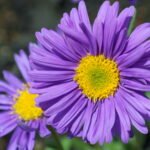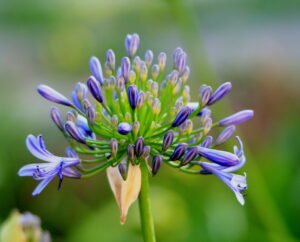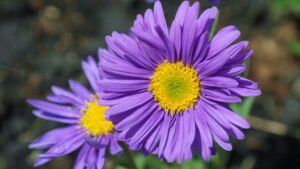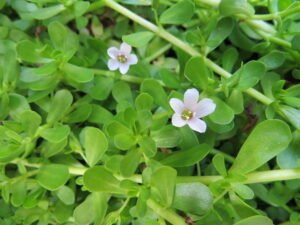Plumbago auriculata: How To Care For Plumbago Plant

Plumbago auriculata, which is also known by names like the Blue Plumbago, Cape Plumbago, or Cape Leadwort, is an evergreen flowering plant. Plumbago is a shrub-like plant that has pale blue-colored blooms. The plumbago plant is native to South Africa, but today plumbago is grown as an ornamental plant in gardens across the world, often as a climber plant. In this article, we will discuss how to care for the plumbago auriculata plant.

Plumbago auriculata is a species of flowering plant in the plant family Plumbaginaceae. The stems of plumbago are thin and climbing. Due to this property, the plumbago plant can be trained as a climber plant.
Some Interesting Facts About Plumbago
Plumbago is known as plumbago due to its lead-colored flowers; in fact, the plumbago name originates from the Latin word “plumbum,” which means lead. Plumbago was named by the ancient Roman naturalist Pliny the Elder, who thought this plant could cure lead poisoning. Auriculata, in its name, means “with ears” due to the shape of plumbago plant leaves.
The sepals of plumbago plants are sticky by nature. It sometimes catches insects and flies. In fact, the current species of plumbago is thought to bear a striking resemblance to the initial ancestors of Drosera and other carnivorous plants.
Some Commonly Asked Questions About Plumbago
Is plumbago poisonous to humans?
Yes, the entire plant of plumbago is toxic to humans and pets. Even the pollen of this plant is known to be toxic. If any part of the plumbago plant is ingested by mistake or if its sap is absorbed by the skin, it is known to cause irritation and dermatitis.
Is plumbago an annual or perennial plant?
In its native conditions, plumbago is a perennial evergreen plant. If the winter in your area is harsh with snow and frost, it must be overwintered indoors. Plumbago plant is native to warm temperate to tropical regions of the world. It needs warm weather to bloom and grow. The life span of plumbago plants is known to be around 8 to 9 years.
Is plumbago an indoor or outdoor plant?
Plumbago can be grown both indoors and as an outdoor plant. The plumbago plant needs 6 to 8 hours of direct sunlight. It can tolerate some shade, but its blooming will be affected if it is grown in a shady area. Ensure to keep the indoor plumbago plant in an area that receives sufficient sunlight.
When does plumbago bloom?
Plumbago is known to bloom from spring through fall. It stops blooming in winter if the temperature falls below 60 degrees Fahrenheit (16 degrees Celsius).
How big do plumbago plants get?
Plumbago plants are known to grow rapidly and can grow up to 20 feet tall and 10 feet wide in nature. Regular pruning and cutting is required to maintain the desired shape of the plant.
How To Care For Plumbago Plant
Selecting Right Location
As already explained, the plumbago plant grows best in areas that receive 6 to 8 hours of direct sunlight. So it is important to select a sunny location in your garden or home for it. If you are planning to grow it in the ground, ensure that area does not get waterlogged.
Preparing The Soil For Plumbago
Plumbago prefers well-drained soil. So if you are planning to plant the plumbago plant directly on the ground, prepare that area first. The plumbago plant can be grown in a wide variety of soils, from sand to clay, as long as it is well drained and does not get waterlogged easily. Remove weeds and other debris from the planting area. Amend the soil with compost, vermicompost, or organic manure.
If you are planning to grow the plumbago plant in a pot or container, prepare the soil mix for it. Add 2 parts garden soil, 1 part compost, vermicompost, or organic manure, and 1 part sand. Ensure that the potting soil mix has good water drainage properties.
Watering For Plumbago
Plumbago is a drought-tolerant plant, but to keep the plant healthy, regular watering is required. The soil must be moist but never waterlogged. Water deeply once a week and then allow the soil to dry before the next watering.
If your plant is in a pot or container, water until water flows freely out of the drainage hole, and then allow the top 2 inches of pot soil to dry before next watering.
Fertilizer For Plumbago
Plumbago is a light feeder plant, and application of slow-release fertilizers like compost, vermicompost, or organic manure once before the start of the spring and once after summer ends is sufficient for the plant. But if you want to encourage maximum blooming and growth in the plant, you can feed it with N-P-K: 8-8-8 or N-P-K: 10-10-10 twice a month during its growth period.
Cutting And Pruning For Plumbago
Plumbago grows rapidly, and to maintain its desired shape, pruning can be done during any part of the year. But ideally, pruning should be done on plumbago plants in the early spring. This will encourage new growth in plants. One more pruning can be done after the summer.
Pest and Diseases Care For Plumbago
Plumbago is resistant to most pests and plant diseases. The most important care tip is to avoid overwatering, which can cause root rot in plumbago. Also, avoid watering on leaves and water directly in roots to avoid any chances of fungal infestation in leaves.
Chilli thrips are small insects that can produce curled leaves on Plumbago auriculata plants, and they can cause stunted growth in plants. If your plumbago plant is affected by this insect, you can spray a neem oil mixture on the plant to control it.
Tags: #Plumbago Plant Care, #How To Care For Plumbago, #How to Plant Plumbago, #Plumbago care for beginners, #Plumbago care tips, #AmazeGarden.Com, #Plants Care Tips, #Gardening, #Kitchen Gardening, #Terrace Gardening, #Backyard gardening, #Container Gardening, #Urban Gardening, #plants Care, #Plumbago Care, #Plumbago Care Tips,
To Get The Latest Gardening Tips, Tricks and News – Subscribe to our newsletter!









